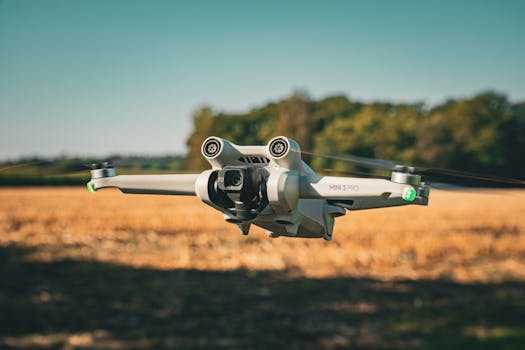
**
Ben Sidders: How Causal AI is Revolutionizing R&D and Driving Innovation
The field of Artificial Intelligence (AI) is rapidly evolving, moving beyond simple correlation to embrace the power of causality. This shift is profoundly impacting various sectors, and nowhere is this more evident than in Research and Development (R&D). Ben Sidders, a leading figure in the AI and data science domain, champions the integration of causal inference into AI systems to unlock unprecedented levels of R&D success. His insights offer a compelling vision of how this technology is reshaping innovation and driving efficiency across industries.
This article explores Sidders' perspective on causal AI and its transformative role in R&D, focusing on its applications, benefits, and the challenges involved in its implementation. We will delve into key aspects like counterfactual reasoning, causal discovery, and the impact on experimental design, ultimately revealing why causal AI is poised to become a cornerstone of future R&D strategies.
Understanding the Shift from Correlation to Causation in AI
Traditional AI models often excel at identifying correlations – spotting patterns and relationships within data. However, correlation doesn't equal causation. Knowing that two variables are related doesn't explain why they're related or predict the outcome of manipulating one variable to influence the other. This is where causal AI steps in.
Causal AI goes beyond simply identifying patterns. It aims to understand the underlying causal mechanisms driving those patterns. This allows for more accurate predictions, better decision-making, and the ability to design interventions that lead to desired outcomes. Sidders argues that this is particularly crucial for R&D, where understanding why something works – or doesn't work – is paramount.
Causal AI in R&D: Unlocking New Possibilities
The implications of incorporating causal AI in R&D are far-reaching:
Improved Drug Discovery: By understanding the causal relationships between drug compounds and their effects, researchers can accelerate the drug development process, predict potential side effects more accurately, and personalize treatments. Causal inference helps in identifying the most promising drug candidates and optimizing clinical trials.
Faster Material Science Innovation: Discovering new materials with specific properties often relies on extensive experimentation. Causal AI can significantly reduce the number of experiments needed by identifying the causal factors influencing material properties, leading to faster breakthroughs and reduced costs.
Enhanced Product Development: Understanding customer preferences and the causal factors influencing product success is crucial for businesses. Causal AI can analyze customer data to identify the key drivers of satisfaction and inform product design decisions, leading to more successful product launches.
Optimizing Manufacturing Processes: Causal AI can identify the root causes of manufacturing defects and inefficiencies, leading to optimized processes and reduced waste. This results in improved product quality, increased production efficiency, and lower operational costs.
Accelerated Scientific Discovery: Across various scientific disciplines, causal AI can help scientists unravel complex relationships between variables, leading to faster scientific breakthroughs and a deeper understanding of natural phenomena.
Key Techniques in Causal AI for R&D
Several key techniques are crucial for implementing causal AI in R&D:
Causal Discovery: Algorithms that identify causal relationships from observational data, reducing reliance on controlled experiments.
Counterfactual Reasoning: The ability to answer "what-if" questions, simulating the impact of different interventions to evaluate potential outcomes. This is invaluable for assessing the potential impact of new drugs or product designs before deployment.
Causal Bayesian Networks: Probabilistic graphical models that represent causal relationships between variables, allowing for more robust and comprehensive causal modeling.
Reinforcement Learning with Causal Inference: Combining reinforcement learning's ability to learn optimal actions with causal inference’s ability to understand the reasons behind those actions. This allows for the development of more adaptable and robust AI systems for R&D applications.
Challenges and Future Directions
Despite the immense potential, incorporating causal AI in R&D presents some challenges:
Data Requirements: Causal inference often requires larger and more comprehensive datasets than traditional AI methods.
Computational Complexity: Causal inference algorithms can be computationally intensive, requiring significant computing power.
Interpretability: Ensuring the transparency and explainability of causal AI models is essential for building trust and facilitating their adoption in R&D settings. This is crucial for building confidence in the results and understanding the implications of the AI's conclusions.
Ben Sidders and other researchers are actively addressing these challenges, developing new algorithms and techniques to improve the efficiency and scalability of causal AI. The future of causal AI in R&D is bright, with ongoing research focusing on:
- Developing more efficient and scalable causal inference algorithms.
- Improving the interpretability and explainability of causal AI models.
- Integrating causal AI with other advanced AI techniques, such as machine learning and deep learning.
- Developing standardized frameworks and tools for implementing causal AI in R&D settings.
Conclusion: Embracing the Causal Revolution in R&D
The integration of causal AI in R&D represents a paradigm shift, moving beyond simple correlation to a deeper understanding of underlying causal mechanisms. Ben Sidders' advocacy for this approach highlights its transformative potential across various industries. By leveraging the power of causal AI, organizations can accelerate innovation, improve decision-making, and ultimately achieve greater success in their R&D endeavors. The future of R&D is undeniably intertwined with the advancements in causal AI, promising a new era of efficiency, discovery, and impactful innovation.




















